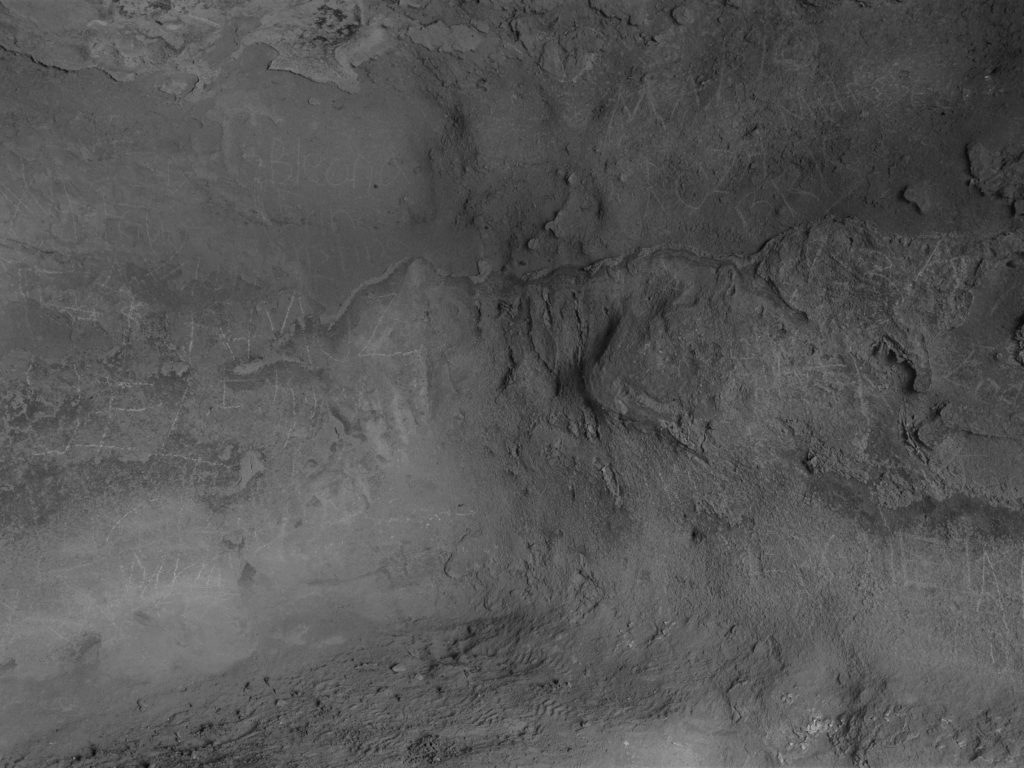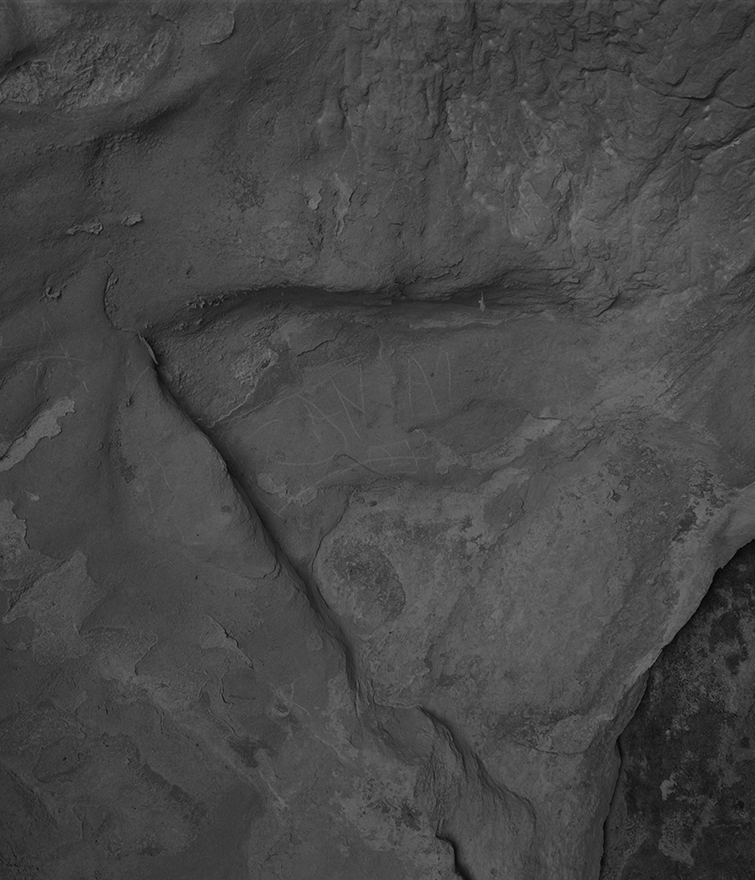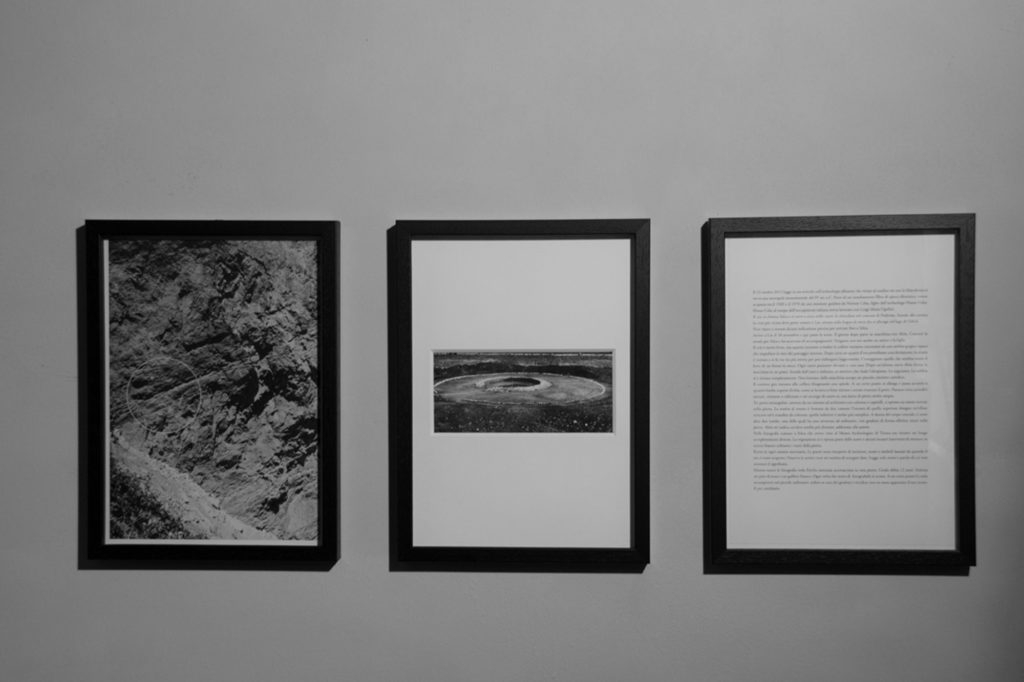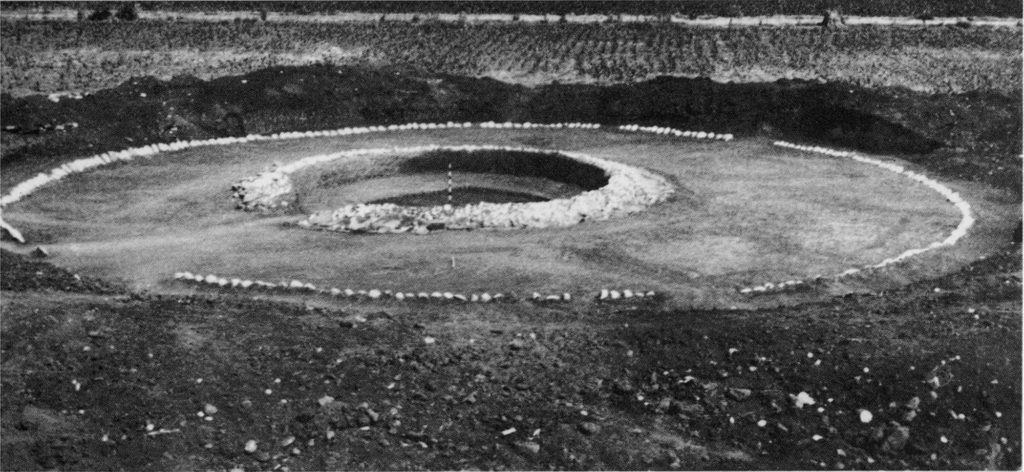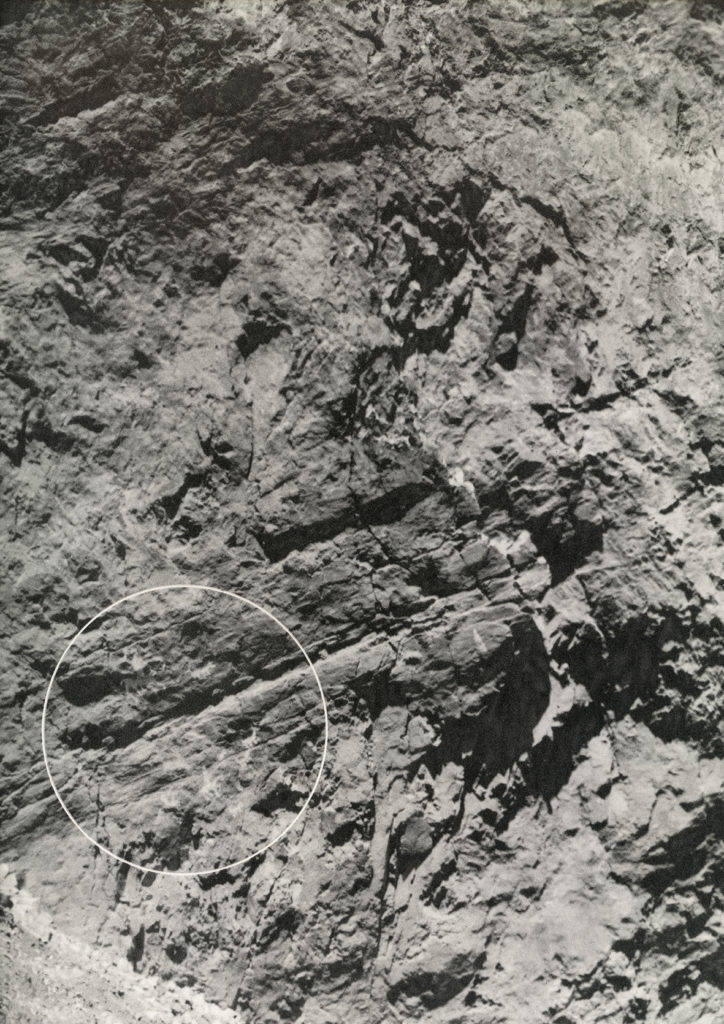On October 23, 2015, while reading an article on Albanian archaeology, I discover that on Albania’s eastern border, close to Lake Orhid, there’s a monumental necropolis from the IV century BC. This Illyrian settlement of the Hellenistic period was discovered between 1969 and 1970 by an expedition lead by Neritan Ceka, Hasan Ceka’s son. Hasan Ceka had worked with Luigi Maria Ugolini at the times of the Italian invasion of Albania. The site is called Selca e Poshtme. The closest town on the map is Lin, but I can’t find precise information about the road from Lin to Selca. Lin is a small village on a peninsula on Lake Orhid. I arrive at Lin on November 18 and I spend the night there. The day after I ‘m in Altin’s car. He is my landlady’s brother in law. He knows the road to Selca and agreed to accompany me. A friend and his daughter Emilia are with us, too. The sun is shining, but when we drive up the hills we’re caught in a grey and dull fog that completely hides the surrounding landscape. Fifteen minutes later, we take a secondary route. Initially, it’s a narrow unpaved road that keeps getting smaller, eventually, it widens towards the end. We follow what seems to be a dry riverbed. Sometimes we go by a house. After the last turn, Altin parks the car in a meadow. We get out of the car and follow him on a path going up a plateau. The fog has completely receded, now. I can see a small catholic cemetery not far from the car. The path climbs up the hill drawing a spiral. At a certain point, it widens and we go by some hollows covered with grass. It looks like the ground had collapsed from underneath. After fifteen more minutes, we slow our pace down and I realize I’m standing on a great stone slab. There are three rectangular doors, supported by an architrave with columns and capitals, leading to rooms that are carved in the stone. The necropolis consists of two central rooms, the superior and inferior, and two other rooms on the right, one of these has the shape of an amphitheater with elliptical shaped steps. Altin shows me a fifth tomb, distant from this group. In the Archaeologic Museum of Tirana, I had seen some pictures taken right after the discovery: they showed a place out of time, a naked wall of stone, with no traces of vegetation or people. Now the plants are growing back and taking over the excavation area. The stone walls now show some unwise restoration interventions, in white plaster. I go inside all the mortuaries. The walls inside are covered with carved words and symbols from the past fifty years, since the site was discovered. I can’t see any date among these writings, only names and words I can’t understand. While I’m taking the pictures, I notice Emilia is bored. She must be twelve years old and she’s wearing blue jeans and a white sweater. Every time I try to take a picture of her, she turns away. At a certain point, I see her climb into the small amphitheater, sit on one of those big steps, and write her name on it with a stone. Then she circles it.
Translated by Dennis Logan Carrara ( Italian version link )
